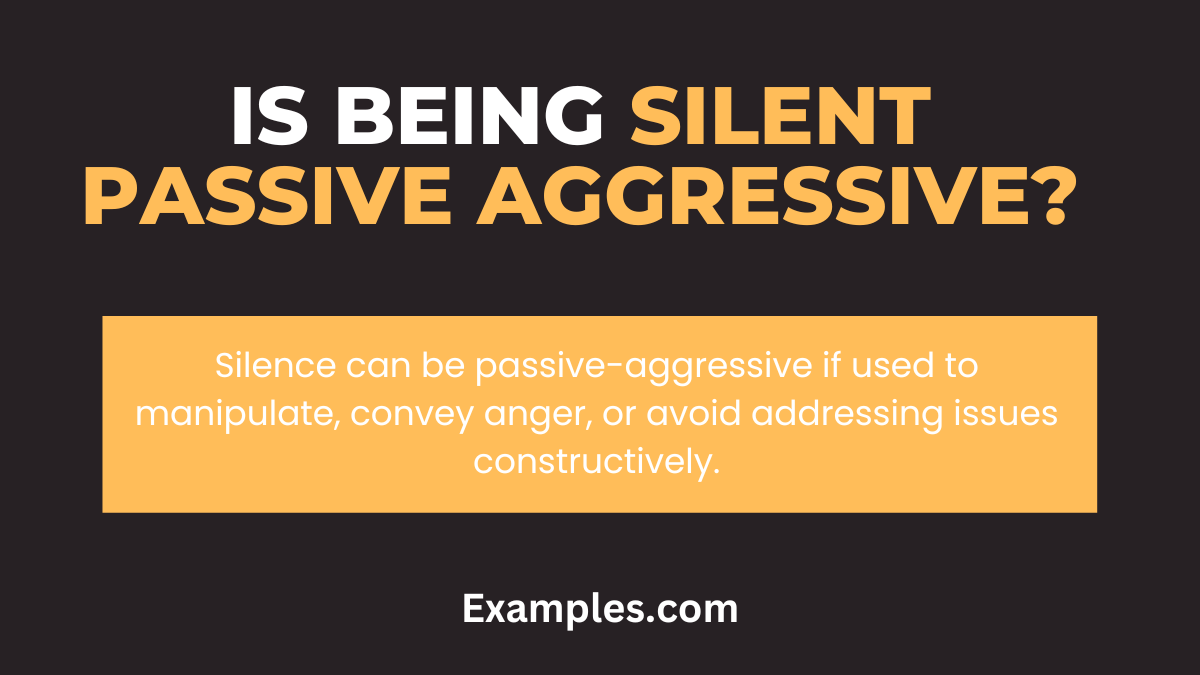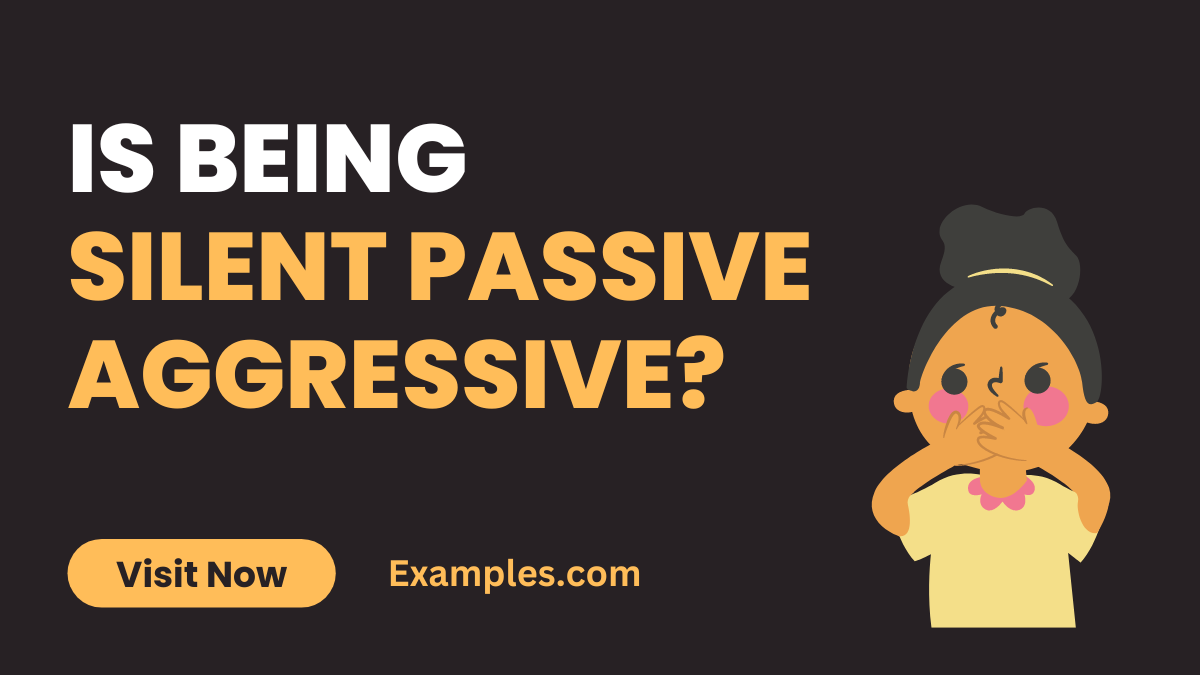Is Being Silent Passive Aggressive?
This guide delves into the nuanced world of non-verbal cues, uncovering the often-misunderstood realm of silent communication. Understanding ‘Passive Aggressive Communication’ is crucial in deciphering whether silence is a mere pause or a powerful tool of unspoken resentment. We’ll explore various scenarios, offer examples, and provide tips to distinguish between harmless silence and a passive-aggressive message.”
Is Being Silent Passive Aggressive?

Silence can sometimes be a form of passive aggressive communication, but it’s not always the case. In simple terms, being passive aggressive means expressing negative feelings, resentment, or anger indirectly, rather than openly discussing them. When someone chooses to be silent, it can be a way to avoid confrontation, express displeasure, or control a situation without using words. However, silence can also be just a need for personal space, a moment of reflection, or a response to being overwhelmed. To understand if silence is passive aggressive, it’s important to consider the context, the person’s usual communication patterns, and what’s happening in the relationship or situation.
- Context of Silence: The setting in which silence occurs is crucial. If it happens during a conflict or after a disagreement, it could be passive aggressive. It’s a non-verbal way of expressing discontent without directly addressing the issue.
- Duration and Timing: Prolonged silence, especially following an argument or a sensitive discussion, may indicate passive aggression. It’s used as a tool to express anger or disapproval without verbal confrontation.
- Typical Communication Patterns: Compare the silent behavior with the person’s usual way of communicating. If they’re generally open and suddenly become silent, it could suggest a passive aggressive response.
- Non-Verbal Cues Accompanying Silence: Body language like eye-rolling, sighing, or avoiding eye contact while being silent can reinforce the idea of passive aggression.
- Effect on the Receiver: If the silence leaves the other person feeling guilty, anxious, or as if they’re walking on eggshells, it might be passive aggressive. It can be a control mechanism to affect the other person’s emotions.
- Previous Patterns of Conflict Resolution: If the person has a history of avoiding direct confrontation and resorts to indirect methods like silence to deal with conflicts, it points towards passive aggressive behavior.
- Silence as a Coping Mechanism: Sometimes, individuals use silence as a way to cope with their inability to express anger or frustration directly, which can be a passive aggressive trait.
- Response to Inquiries about Silence: When asked about their silence, if the person dismisses it or denies any negative feelings, yet continues to be withdrawn, it might indicate passive aggression.
- Silence After Specific Events or Comments: If silence consistently follows certain topics, remarks, or events, it may be a passive aggressive response to those specific triggers.
- Impact on Relationships: Consistent use of silence in a passive aggressive manner can strain relationships, creating an environment of unresolved issues and emotional distance.
Silence becomes passive aggressive when it’s used as an indirect method to express displeasure, exert control, or punish someone, rather than a means of healthy communication or personal reflection. Understanding the nuances of this behavior requires looking at the broader context, patterns, and impacts of the silent episodes



